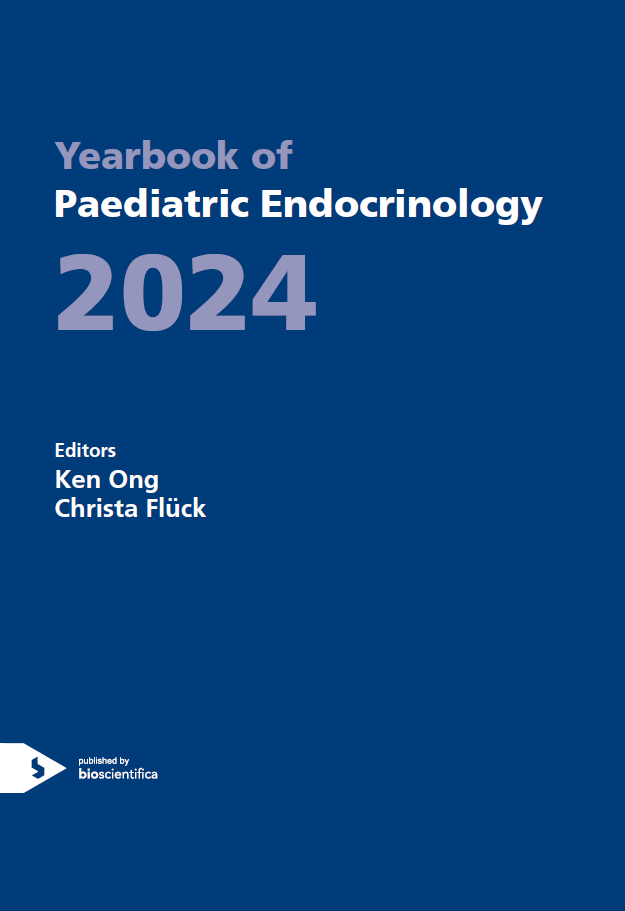8. Adrenals
Important for Clinical Practice
ey0021.8-3 | Important for Clinical Practice | ESPEYB21
8.3. European Society of Endocrinology and Endocrine Society Joint Clinical Guideline: Diagnosis and Therapy of Glucocorticoid-induced Adrenal Insufficiency
F Beuschlein , T Else , I Bancos , S Hahner , O Hamidi , L van Hulsteijn , ES Husebye , N Karavitaki , A Prete , A Vaidya , C Yedinak , OM Dekkers
ey0021.8-4 | Important for Clinical Practice | ESPEYB21
8.4. Incidence and risk factors for adrenal crisis in pediatric-onset adrenal insufficiency: a prospective study
M Hosokawa , Y Ichihashi , Y Sato , N Shibata , K Nagasaki , K Ikegawa , Y Hasegawa , T Hamajima , F Nagamatsu , S Suzuki , C Numakura , N Amano , G Sasaki , K Nagahara , S Soneda , D Ariyasu , M Maeda , H Kamasaki , K Aso , T Hasegawa , T Ishii
ey0021.8-5 | Important for Clinical Practice | ESPEYB21
8.5. High-resolution daily profiles of tissue adrenal steroids by portable automated collection
TJ Upton , E Zavala , P Methlie , O Kampe , S Tsagarakis , M Oksnes , S Bensing , DA Vassiliadi , MA Grytaas , IR Botusan , G Ueland , K Berinder , K Simunkova , M Balomenaki , D Margaritopoulos , N Henne , R Crossley , G Russell , ES Husebye , SL Lightman
ey0021.8-6 | Important for Clinical Practice | ESPEYB21
8.6. Glucose. pattern in children with classical congenital adrenal hyperplasia: evidence from continuous glucose monitoring
A Galderisi , D Kariyawasam , A Stoupa , AN Quoc , G Pinto , M Viaud , S Brabant , J Beltrand , M Polak , D Samara-Boustani
ey0021.8-7 | Important for Clinical Practice | ESPEYB21
8.7. Parental concerns about genital differences in children with congenital adrenal hyperplasia persist regardless of the selected intervention
J Alderson , M Thornton , M Skae , J Jones , N Nicoll , D Harcourt , M Woodward , EC Crowne
ey0021.8-8 | Important for Clinical Practice | ESPEYB21
8.8. Paediatric Cushing syndrome: a prospective, multisite, observational cohort study
C Tatsi , C Kamilaris , M Keil , L Saidkhodjaeva , FR Faucz , P Chittiboina , CA Stratakis
ey0021.8-9 | Important for Clinical Practice | ESPEYB21
8.9. Consensus statement by the French Society of Endocrinology (SFE) and French Society of Pediatric Endocrinology & Diabetology (SFEDP) for the diagnosis of Cushing's syndrome: Genetics of Cushing's syndrome
L Martinerie , J Bouligand , MO North , J Bertherat , G Assie , S Espiard
ey0021.8-10 | Important for Clinical Practice | ESPEYB21
8.10. Management of phaeochromocytoma and paraganglioma in patients with germline SDHB pathogenic variants: an international expert consensus statement
D Taieb , S Nolting , ND Perrier , M Fassnacht , JA Carrasquillo , AB Grossman , R Clifton-Bligh , GB Wanna , ZG Schwam , L Amar , I Bourdeau , RT Casey , J Crona , CL Deal , J Del Rivero , QY Duh , G Eisenhofer , T Fojo , HK Ghayee , AP Gimenez-Roqueplo , AJ Gill , R Hicks , A Imperiale , A Jha , MN Kerstens , RR de Krijger , A Lacroix , I Lazurova , FI Lin , C Lussey-Lepoutre , ER Maher , O Mete , M Naruse , N Nilubol , M Robledo , F Sebag , NS Shah , A Tanabe , GB Thompson , HJLM Timmers , J Widimsky , Jr Young WJ , L Meuter , JWM Lenders , K Pacak




